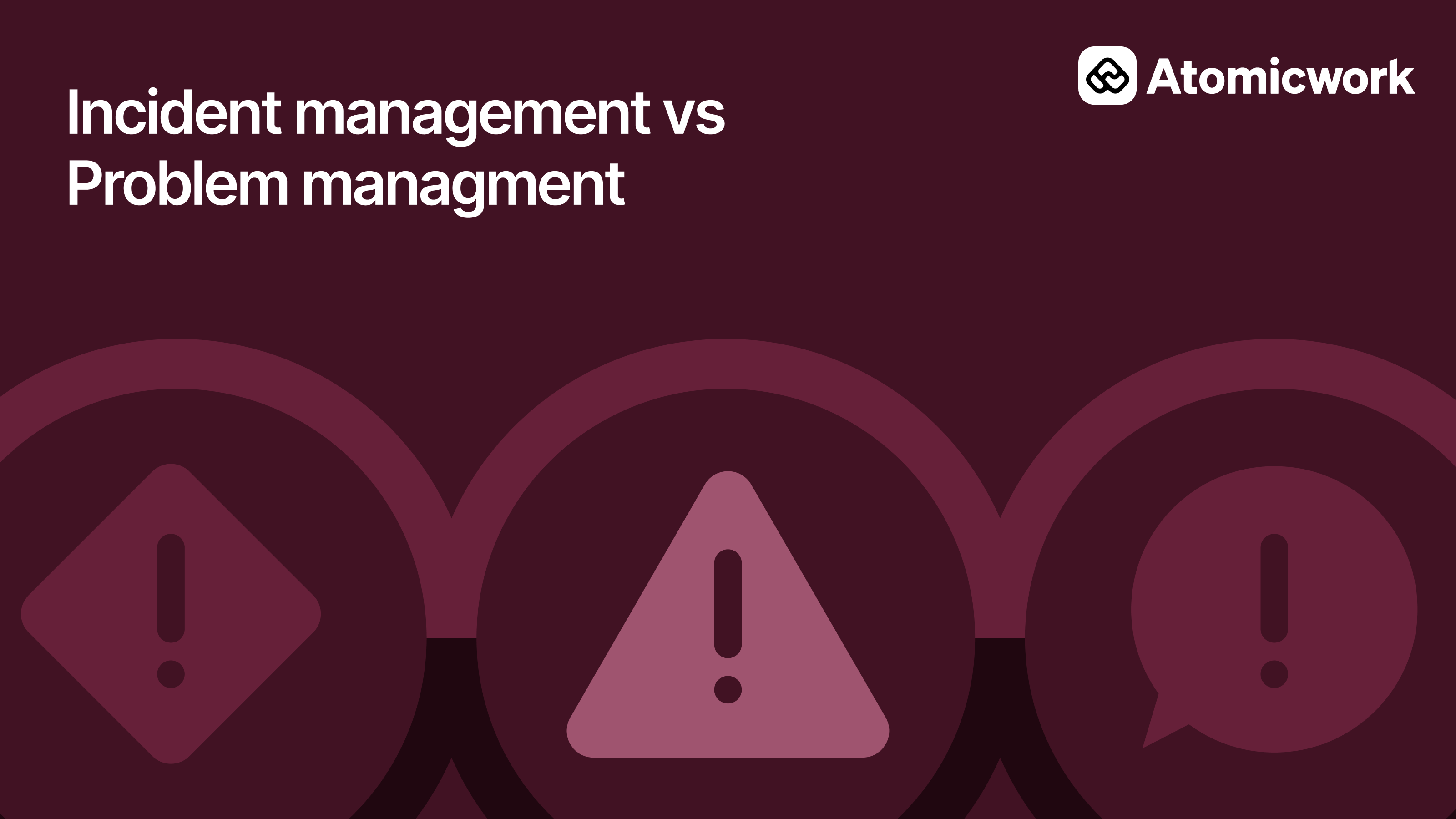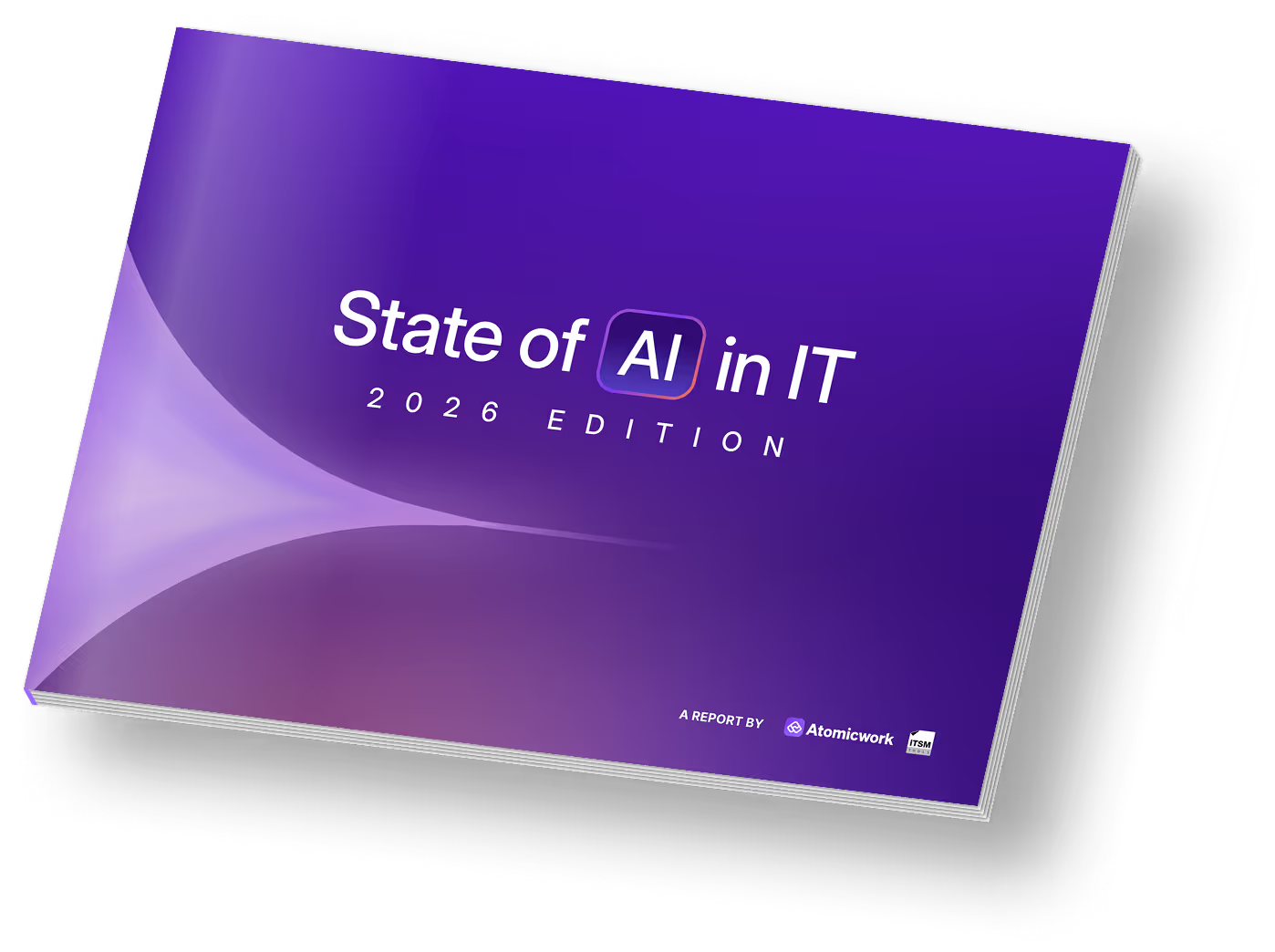IT Problem Management in the Age of AI
IT support admins always try their best to reduce the volume of unplanned disruptions or incidents in the service components. Each incident has a root cause. The goal of IT support teams of any organization is to identify and act against these root causes to stop them from reoccurring.
This process of analyzing the root causes behind incidents and taking preventive measures is called problem management. Organizations lose millions to incidents on average. A common incident like enterprise downtime costs organizations between $1 million and $5 million every year.
In this article, we will discuss everything related to problem management, its goals, and the role of AI in speeding up the problem management process.

Purpose of problem management in modern enterprises
The primary goal of problem management is to reduce the volume of incidents and minimize their impacts by identifying the root causes.
By ‘root cause’, we don’t mean a simple technical explanation of an incident.
For example, ‘network outage caused downtime’ is not a satisfactory answer to the question ‘what caused downtime?’. It is an obvious and generic answer that doesn’t add any value to your oragnization.
To find the root cause, you will have to ask the right questions, such as:
The goal of problem management is to answer all of these questions.
With a set problem management process, you will find the root causes of an incident and its potential fixes quickly.
With frequent changes in the Information Technology Infrastructure Library (ITIL) processes, organizations strive to achieve more predictability in their IT support operations. And a dedicated problem management process does precisely that.
The secondary goals of problem management include:
Since an automated problem management process actively reduces incident tickets, it also translates into improving customer satisfaction.
What is problem management?
ITIL defines a problem as “A cause, or potential cause, of one or more incidents”. It further mentions that problems are the causes of incidents, but problems and incidents should be distinguished from one another. Incidents are the impacts of the problems or causes. We've explored the differences and dependencies between the two in this article here.
The other terminologies related to ITIL problem management are:
Known error: ITIL defines it as 'A problem that has been analysed but has not been resolved'.
Workaround: According to ITIL, a workaround is 'a solution that reduces or eliminates the impact of an incident or problem for which a full resolution is not yet available. Some workarounds reduce the likelihood of incidents.'
ITIL problem management process
ITIL defines the problem management process into three phases: problem identification, problem control, and error control.

Problem identification: The goal of this phase is to analyze a problem, its potential impacts, and associated factors. To do that, you need to perform trend analysis over pre-recorded incidents, detect recurring issues, identify the risk possibilities associated with an incident, and analyze information relevant to suppliers, software developers, and project teams that might lead to the problem.
Below are the steps to identify a problem:
Problem control: The goal of this phase is to document the problems identified in the previous phase along with the relative known errors and workarounds. Problems are prioritized based on the associated risks and potential impacts.
Error control: Error control is about managing known errors, which means that the faulty components have already been identified. This phase is also about identifying potential permanent solutions to problems only if they are feasible regarding cost and benefits.
How does AI impact problem management?
Think of a common incident like a recurring printer issue.
Here is how AI can simplify the problem management process.
Problem creation
Creating problems are usually created:
When a Problem is created from an incident or major incident, AI automatically links the incident to the Problem. Multiple incidents can be created from a single Problem.
Once the problem gets created, AI auto-generates a list of tasks based on it.

💡How does this help the IT support team?
IT support teams don’t have to manually search massive incident databases to link a new incident to a past problem. Some organizations don’t even have a database specific to incidents, and they record both incidents and service requests together, leading to a more exhaustive manual search.
Root cause analysis
AI simplifies the root cause analysis process by documenting problems, identifying underlying causes, and fixing the key issues. AI identifies and recommends the relevant past incidents and their potential fixes in seconds so you can focus on executing the fix. AI can also suggest potential root causes.
💡How does this help the IT support team?
When AI assigns a past incident with a potential solution, it is much more accurate. Unlike human solutions, these are assumption-free, effective, and reduce the possibility of recurring incidents.
Solution and workaround
AI records the results of root cause analysis and documents the workarounds against the problem contexts. After identifying a fix or workaround, an agent can broadcast the updates relevant to the incidents.

💡How does this help the IT support team?
AI documents all fixes and workarounds, saving the support team’s time. AI problem management tools integrate easily with workspace solutions like Slack and Teams, which means support admins can easily share these updates with the entire team.
Conclusion
Though incidents are unplanned, your company is vulnerable to them. Major incidents can have destructive impacts on your organization and employees, including significant financial losses.
An AI-backed problem management process is what you need to deal with incidents and prevent them at their roots.
AI-based problem management solutions like Atomicwork focus on the fixes more than the problems. Want to explore more?
Frequently asked questions
Problem management involves analyzing the root causes behind incidents and taking preventive measures to prevent them from recurring. By identifying and addressing underlying issues, it aims to reduce the volume of unplanned disruptions in service components and minimize their impacts.
Benefits include improving IT service availability and quality, reducing incident resolution time, lowering costs associated with disruptions, enhancing employee productivity, and improving customer satisfaction. It also helps achieve more predictability in IT support operations and saves the IT support team's time.
ITIL defines a problem as "A cause, or potential cause, of one or more incidents." Problems are distinguished from incidents, as they are the underlying causes, while incidents are the impacts of these problems.
The three phases of problem management are:
- Problem identification: Analyzing problems, potential impacts, and associated factors
- Problem control: Documenting identified problems, known errors, and workarounds
- Error control: Managing known errors and identifying potential permanent solutions
Yes, Atomicwork helps in proactively identifying problems, working on root cause analysis, and minimizing incident impact. Sign up to give our problem management capabilities a try.
More resources on modern ITSM






































